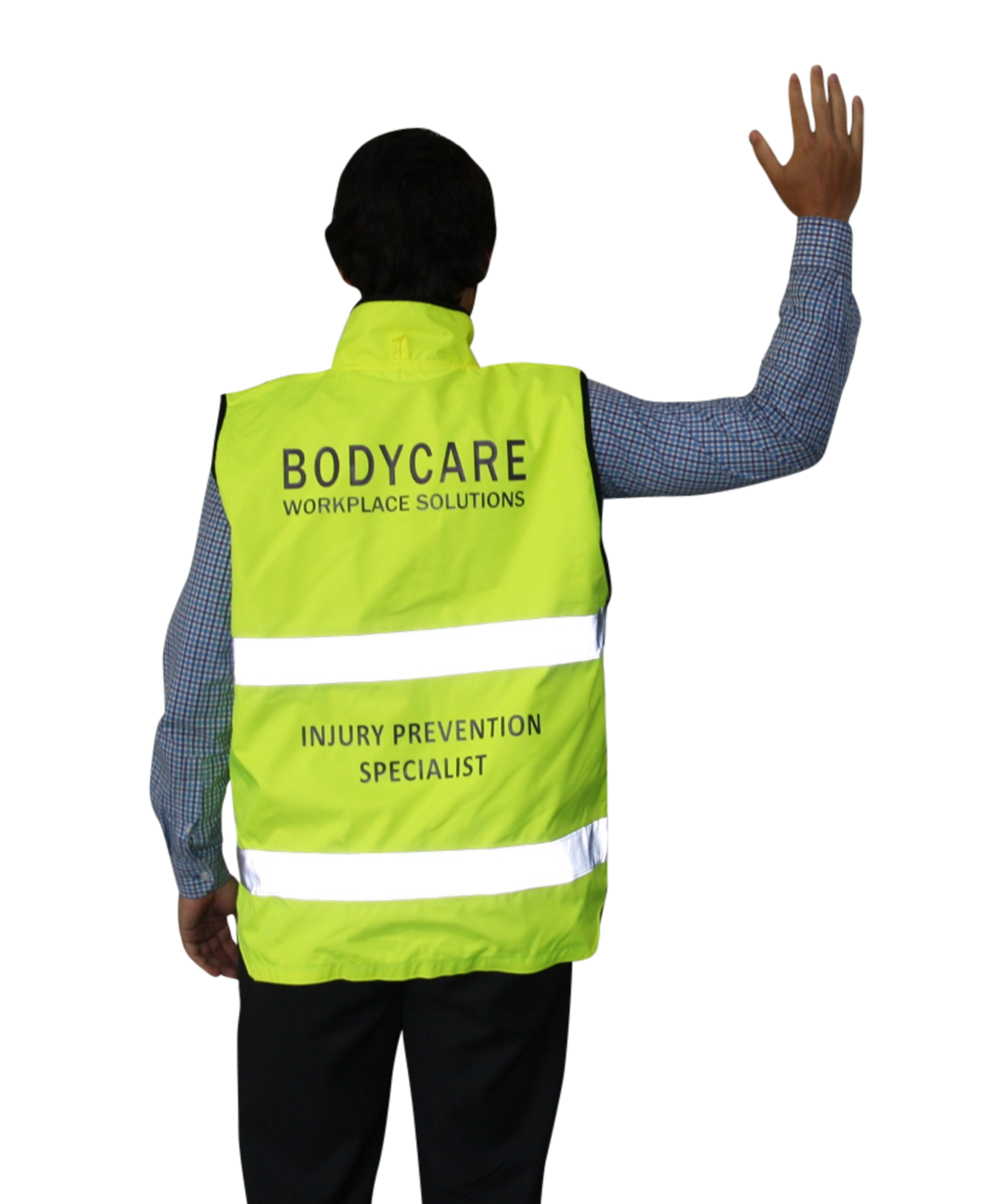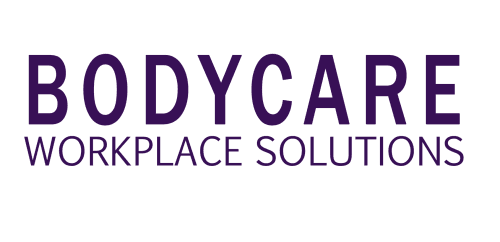5 Tips to improve your posture while you work

There’s a silent danger lurking over the desks and worksites of Australia and it’s costing employers billions of dollars in lost productivity each year. The culprit? Work-related back pain.
Occupational injuries caused by poor posture and below par ergonomic workspaces can easily be avoided through training and providing appropriate equipment, but the responsibility falls on employers to take the lead and implement these vital harm-reduction initiatives. Not only will you protect your employees but you’ll protect your business from lost productivity and potential WorkCover claims.
Good posture vs bad posture
Knowing the difference between good and bad posture and the effects both can have on our physical wellbeing is the first step in knowing how to improve.
Posture refers to the overall correct alignment of our body and goes deeper than just keeping your spine straight. It’s not hard to recognise bad posture in those around us. Slumped shoulders, a head that leans forward or backward, and perhaps even a protruding ‘potbelly’ are all giveaways that most of us can spot easily.
Whilst these symptoms may seem innocent enough, the complications of poor posture go far beyond the visual. Chronic back pain, joint degeneration and a dysfunctional spine can creep up on slouchers, diminishing their muscle strength and opening them up to a range of potential injuries.
Good posture on the other hand, should look natural and graceful. Start by gently pulling your shoulders back and down. The back should be kept straight, with the head up and chin tucked in. Keep the tummy lightly pressed toward the spine and balance your weight between both feet.
Oh, and don’t forget to breathe and relax!
The benefits of good posture
The benefits of good posture will improve both your physical and mental wellbeing. They include:
- Bones and joints that remain healthy for life
- Productivity increases due to optimal blood and oxygen flow in the body
- Improved mood and more positive outlook
- A reduction in pressure on the vertebrae
- Chance of workplace injury significantly decreases
The dangers of bad posture
The dangers of bad posture may surprise you. They can include:
- Neck and back pain
- Weakened core muscles
- Headaches
- Moodswings
- Reduced oxygen to the heart and brain
- Fatigue
- Poor digestion
- Difficulty pumping oxygen to the heart and lungs, causing internal organ malfunction
Now that we know the importance of maintaining good posture, here’s how employers can ensure that their workplaces foster an environment for good spinal health and posture.
1. A standing desk
In the last few years there have been numerous scientific studies touting the long-term health benefits of standing desks for increasing employee energy and concentration levels whilst decreasing the chance of developing illness caused by inactivity. On top of all this, sitting all day twists our spine into an unnatural position, as most of us sit with a curve in our back which is evolutionary unnatural. Remaining hunched in this position over the course of a workday places strain on our neck and back muscles and leads to injury. Upgrading your office equipment to include standing desks gives employees the option to spend a portion of their day standing, meaning pressure is taken off the neck and back, encouraging movement and a neutral spine position.
To use a standing desk correctly, you should aim to adopt the 20:8:2 rule; 20 minutes of sitting, 8 minutes of standing and 2 minutes of movement. Try setting reminders on your phone for every 20 minutes to change your posture and move.
Ensuring your standing desk is at the correct height will also help to minimise the risk of injury. Set your desk so that elbows are at a 90 degree angle when standing comfortably upright and looking straight ahead. Your monitor should be positioned at approximately an arms-length away and the top of the screen should be at eye level or just below.
Conducting workplace training that helps transition employees from a sitting to standing environment will help ensure that uptake and correct techniques are followed.
2. Ergonomics
In 2014, the University of Sydney found that a third of all worldwide work-related disability was linked to lower back pain caused by the work environment and recommended improving ergonomic environments as a key initiative in minimising these numbers. The first place to start is, of course, our desk setup which contributes significantly to how we position ourselves throughout the day and our chances of sustaining an injury.
Good quality, ergonomic chairs that support the spine are crucial to encourage good posture and preventing potential injuries, but there are other simple changes that can be implemented into the existing environment, such as:
- Keeping the monitor at eye level or slightly below
- Keeping a 90-120 degree bend in wrists
- Sitting with the back up against the backrest
- Keeping feet flat on the ground
Engaging the help of an ergonomic assessment specialist to assess your workplace and train employees in correct ergonomic techniques will ensure that your workplace is engaged in best-practice health and safety precautions.
3. Neck position
How you hold your neck is imperative to the health of your spine and your chances of developing a workplace injury. Straining to see a computer monitor that is too close or far away, or juggling dual screens by twisting from the neck rather than using the movement of your swivel chair compromises good posture and can strain your neck, back and shoulder muscles and joints.
- Raise your chair so that your eyes are level with the top of the screen
- Increase the font size you use to reduce straining forward
- If using a laptop, link to a larger monitor but only look between monitors by moving your swivel chair rather than straining your neck from side to side
- If a laptop is the only option, consider getting a monitor raise
- Keep your frequently used tools such as headset or mouse close to you to avoid reaching
- Use a document holder to avoid constantly looking up and down
4. Get moving and don’t forget to stretch
One of the most important and easiest ways to improve your posture at work and therefore decrease the chance of workplace injury is through movement. Implementing a movement program that requires employees to do stretches and take regular short walks, will not only help to reduce any existing pain but is proven in preventing future injury.
As a rule of thumb, everyone should do a minimum of 30 minutes exercise a day. The good news is that this can be as simple as going for a walk during your lunch break, taking the stairs rather than the escalator or taking regular short stretch breaks throughout the day to loosen up your body and get your muscles moving.
Why movement is so important
Prolonged sitting doesn’t just encourage slouching and the detrimental symptoms of poor posture. It is also known to cause a variety of health issues from heart disease to obesity. Increasing physically activity throughout the work day can lead to:
- The prevention of heart disease
- Assistance with weight management
- Improved mood and mental health
- Stronger bones, muscles and joints
Encouraging a healthy office environment that promotes physical activity and good posture encourages employees to work on their physical strength outside of the office, which in turn helps protect the body against injury at work. Consider introducing exercise into your team building activities, or partner with a local gym or yoga center. Alternatively, opt to implement a targeted health and wellbeing program onsite.
Looking for a good workplace stretch you can try at your desk?

Neck Stretch
- Stand up straight with your hand behind your back
- Tilt your ear to your shoulder using your hand to gently apply pressure on your head to increase the stretch
- Hold for 30 seconds
- Repeat 3 times for each side

Shoulder Rolls
- Standing up straight, gently roll your shoulders forwards in a circular motion
- Repeat 5 times
- Gently roll your shoulders backwards in a circular motion
- Repeat 5 times

Upper Back Stretch
- Sitting in a chair, place your hands across the front of your chest to make a cross
- Keeping your lower back still, gently lean backwards to arch your upper back as far as comfortable
- Hold for 10 seconds
- Repeat 3 times

Chest Stretch
- Place your forearm against a door frame, ensuring your elbow is bent at 90º
- Gently rotate your body the opposite way as far as comfortable
- Hold for 30 seconds
- Repeat 3 times for each side
The beauty of these exercises is that you can practice them as often as you need throughout the day. Try doing them once per hour for optimal effectiveness.
5. Implement ergonomics training in the workplace
Protecting your business and employees through best practice ergonomic initiatives takes more than just focusing on good posture in the workplace. Setting yourself up for success begins with speaking to an Occupational Health Professional who can assess your workplace and recommend strategies to help you reach your obligations as an employer.
Don’t know how to get started? Contact the team at Bodycare to learn more about how investing in best-practice ergonomics and the health and wellbeing of your employees is an investment in the health and wellbeing of your business.


